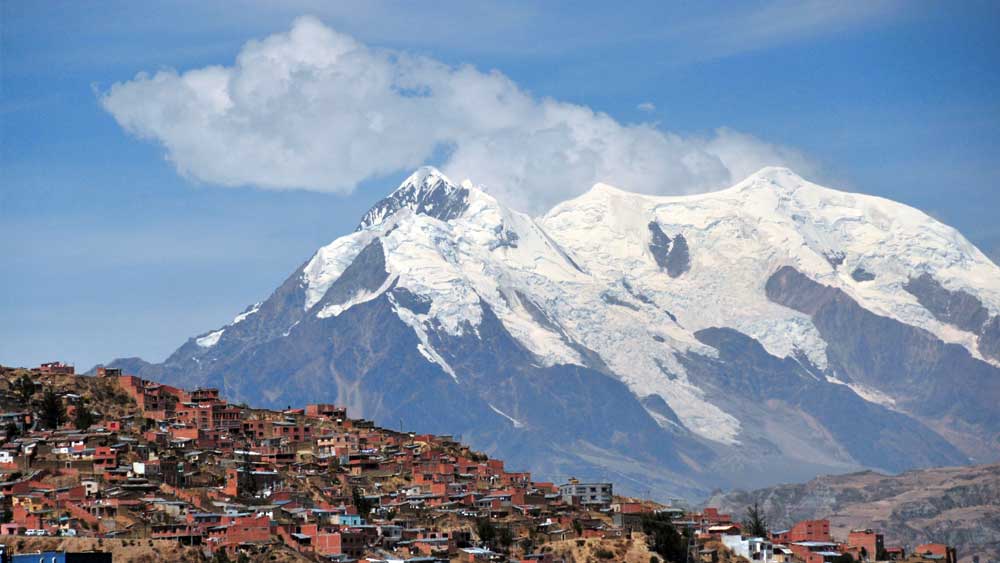On March 24, 2020, we ran a news article about how warmer weather appeared to hamper COVID-19 infections.1 New evidence could indicate that high altitudes might limit the spread of the disease as well.
A recent report details how high-altitude populations appear to have a low COVID-19 infection rate.2 Only 916 of Peru’s 141,000 COVID-19 cases came from the Andean Cusco region—around 80% percent below the national average. Bolivia’s 8,387 COVID-19 cases have been mostly in Santa Cruz—just a few hundred feet above sea level—but high-altitude La Paz had just 410 cases.
The phenomenon is currently unexplained. A peer-reviewed study in Respiratory Physiology & Neurobiology, from Australia, Bolivia, Canada, and Switzerland, examined results from Bolivia, Ecuador, and Tibet. They found populations living at altitudes above 3,000 meters (9,850 feet) reported significantly lower levels of confirmed infections than low-altitude populations. People living at high altitudes might also benefit from an ability to cope with low levels of oxygen in their blood. Other conditions not strictly related to altitude that might also tend to limit spread of COVID-19 in this study include that these are sparsely populated areas, the air is drier, and there are higher levels of UV radiation.
A researcher noted that prolonged exposure to altitude triggers a chain reaction in the lungs involving a protein known as ACE2 that might prevent pulmonary shunting—a common problem among COVID-19 patients.
References
1. Stamp, M. Warm Weather and COVID-19. Creation Science Update. Posted on ICR.org March 24, 2020, accessed June 1, 2020.
2. Tegel, S. From the Andes to Tibet, the coronavirus seems to be sparing populations at high altitudes. Washington Post. Posted on washingtonpost.com June 1, 2020, accessed June 1, 2020.
*Michael Stamp is an editor at the Institute for Creation Research.

COVID-19 Infection Rates Lower at High-Altitudes
The Latest
Puzzling Fossils at an Unlikely Time
Wherever and whenever life is found, it is incredibly complex. This certainly applies to cyanobacterial photosynthetic life that supposedly were some...
CREATION PODCAST
A Theory Designed to Be...Anti-Design | The Creation Podcast:...
Science is objective. At least, that’s what we’re told. But there are inherent issues with this statement that can...
Seeing the Case for Creation in Fruit Flies
Our brain is designed to smoothly and constantly process what we see via the incredibly sensitive photoreceptors (cones and rods) of our eyes.1...
Amazing Defense Systems
Bacteria (prokaryotes) are ubiquitous. A fraction cause disease in people, animals, and plants, but the majority are the foundation for the global food...
Octopus and Fish Plan a Complex Coordinated Hunt
The octopus—an invertebrate—never fails to surprise researchers with its incredible abilities.1,2
The octopus was designed...
A ''40 million year old'' 100% European Gnat
Finding well-preserved creatures in amber1 is a landfall for creation scientists, much like the numerous discoveries of soft dinosaur tissue...
CREATION PODCAST
The Undeniable Power of Narrative | The Creation Podcast: Episode...
Science is objective. At least, that’s what we’re told. But there are inherent issues with this statement that can cause...
Paintbrush of the Creator
Who doesn’t enjoy the amazing color patterns of butterflies?1,2 Such beautiful designs and construction do not reflect blind naturalistic...
November 2024 ICR Wallpaper
"Rejoice always, pray without ceasing, in everything give thanks; for this is the will of God in Christ Jesus for you." (1 Thessalonians 5:16-18 NKJV)
ICR...






















